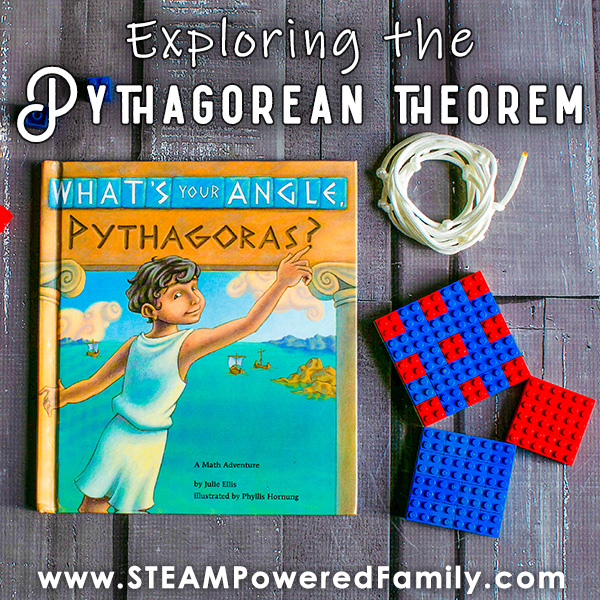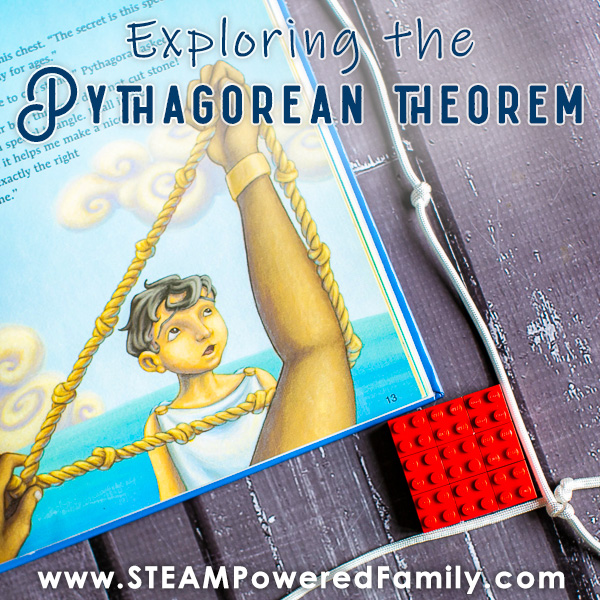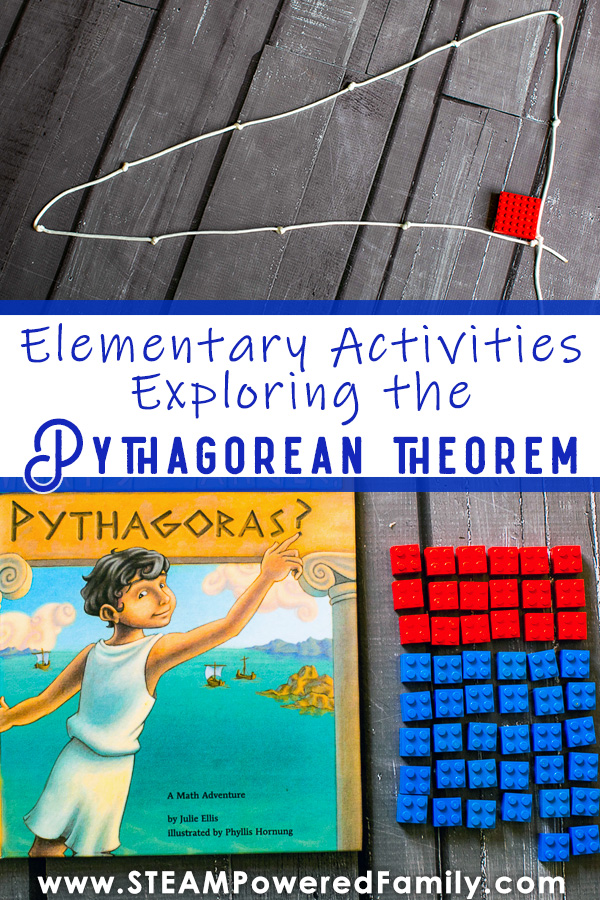Exploring the Pythagorean Theorem – What’s Your Angle Pythagoras?
Math is not my strength. Over the years I have come to realize that I have quite intense math anxiety. The way around that math anxiety for me is to explore math concepts through stories and hands on activities. This makes the concepts more approachable and allows us to explore them in a way that makes it fun and without any anxiety. Which is exactly what we did when exploring the Pythagorean Theorem and the book, What’s Your Angle Pythagoras? Suddenly this theory I remember struggling with so much in school, makes perfect sense.
Proving Pythagorean Theorem With String and Lego

Disclaimer: This article may contain commission or affiliate links. As an Amazon Influencer I earn from qualifying purchases.
Not seeing our videos? Turn off any adblockers to ensure our video feed can be seen. Or visit our YouTube channel to see if the video has been uploaded there. We are slowly uploading our archives. Thanks!
I love a good book that also includes a great lesson. It is one of our favourite ways to learn. When the kids read a book and jump up, inspired to try something new, it makes my heart do a little happy dance.
One of the subjects I enjoy learning about from stories and books is math. I always thought I was bad at math, but when I started teaching I realized it wasn’t that I was bad at math, I had intense math anxiety.
And boy that anxiety really messes with a person. The lies it tells!
Once I recognized the anxiety for what it was, I set about very intentionally to teach in a way that would limit my anxieties being passed onto my kids. We did lots of hands on exploration of math concepts, read lots of books, and I focused on overcoming my own struggles.
I love using hands on tools for discovery and learning. Plus books that explore math concepts in a non-threatening way. Most of all I try to make math fun and real. Not just numbers on a piece of paper with some crazy pressure to “do something” with them!
Learning Math With What’s Your Angle Pythagoras?
This book is so great! It is very simply written with gorgeous, colourful artwork. This makes the math so incredibly accessible. Plus the story is simply enchanting.
Honestly, I wouldn’t expect anything less as it comes from the same publisher as the Sir Cumference books.
The best part is that this book could be used by anyone, of any age that wants to develop a better understanding of the Pythagorean Theorem in a short amount of time.
What is the Pythagorean Theorem?
So the most obvious question we need to answer first is, What is the Pythagorean Theorem? The equation seems simple enough.
a2 + b2 = c2
Where a and b are two legs of a right triangle, and c is the side opposite the right angle (reminder, a right angle is 90 degrees).
But what does this mean?
It means we can work out the length of one side of a right triangle if we know the length of the other two of the sides.
Believe it or not this an incredibly handy bit of information to have! In the book we learn a few of the practical uses for this equation. Including calculating distances, engineering, building stable based structures, and more.
But the biggest inspiration we had from the book, was two different methods for how we could prove the Pythagorean Theorem. One way uses string, the other uses Lego.
Hands on learning is so much fun!
Proving the Pythagorean Theorem with string
In the first activity we replicate an activity Pythagoras learns from a builder in Alexandria, Egypt. Take a string or rope and tie 12 knots in the rope at equal distances.
One trick for doing this is to measure the rope and divide by 12. Mark at that those intervals along the rope and tie your knots centered on those marks.
For the final, 12th knot, make sure you tie it back into the other end so you are creating a big circle.
Now play with the knotted rope to recreate the right angle triangle like Pythagoras did. If you use a big enough rope you can use your whole body to create the triangle like he did. This is an incredible learning moment for kids as they will be using their whole body to manipulate the rope into shape.
Classroom Tip! Why not get a REALLY long rope and have the kids work in teams on this project?
The goal is to have 3 knots on one side, 4 knots on the other and 5 on the last side. Use a Lego piece or other square item to prove you have a right angle.

Proving the Pythagorean Theorem with Lego
Another discovery Pythagoras makes in the story ‘What’s Your Angle?’, is that you can use squares to prove the Pythagorean Theory.
In our activity we replicate this using square 2×2 Lego pieces.
We start by building three squares. 3×3, 4×4 and 5×5. Arrange the squares to create a right triangle in the middle.
Now you can increase the challenge here, just like Pythagoras did. Chose two different coloured Lego squares. Build a 3×3 square out of one colour (say red) and 4×4 out of the other colour (say blue).
You will notice that you use 9 red squares and 16 blue squares. Now take another 9 red squares and 16 blue squares to make your final square of 5×5. Notice you use all your squares! This proves that:
a2 (red) + b2 (Blue)= c2
Pretty cool!
Pythagorean Theorem Worksheets
I’ve put together a few worksheets you can use in your classroom and lessons when learning the Pythagoras Theory. This activity pack includes information on Greece and Pythagoras, detailed activity instructions for proving the Pythagorean Theorem with String and Lego (plus a printable page with templates if you don’t have Lego), plus some vocabulary worksheets. You can grab this activity pack from our store or Teachers Paying Teachers.
More Math Fun!
Why not celebrate a day to honour math, with Pi Day! Not sure about Pi? Explore our resource, What is Pi Day? and get lots of activity ideas.
Get hands on with an interactive math centre concept that has HUGE wow factor with these 3D Nets Interactive Geometry Project. Simply pull the string and watch kids faces light up!









